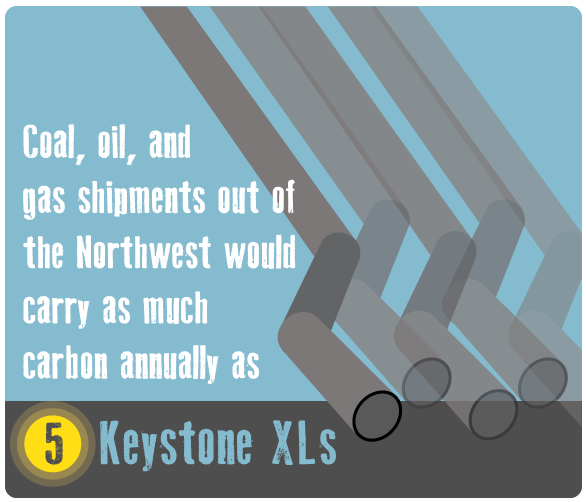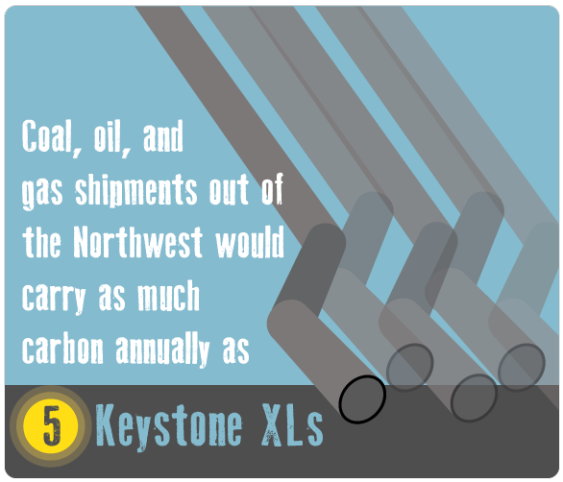Sightline is releasing a new report, Northwest Fossil Fuel Exports, showing that the region is poised to become a carbon export hub of global consequence. A tally of the new coal, oil, and gas shipment schemes being planned in the Northwest finds that they would carry five times as much carbon as the controversial Keystone XL Pipeline.
Taken together, these plans would be capable of delivering enough fuel to release 822 million metric tons of carbon dioxide into the atmosphere each year. In the report, Sightline examines each project individually and does the carbon math to find that:
- Coal terminals. Seven new or expanded coal export terminals would together move 132 million metric tons of coal annually above current levels, enough to emit 264 million metric tons of carbon dioxide per year.
- Oil pipelines. Two new oil pipelines would be capable of carrying more than 1.1 million barrels per day, enough to emit 199 million metric tons of carbon dioxide annually.
- Oil-by-rail facilities. Eleven oil-by-rail facilities at refineries or port terminals could move 858,900 barrels per day, enough to emit 132 million metric tons of carbon dioxide each year.
- Natural gas pipelines. At least six new natural gas pipelines capable of carrying 11.7 billion cubic feet per day would be enough to emit 227 million metric tons of carbon dioxide annually.
The Pacific Northwest has long been known for environmental leadership and clean energy, but it is on the cusp of transforming into a major center for fossil fuel exports. Because the region stands squarely between Asian energy markets and large fossil fuel deposits in the interior of North America, the permitting decisions that Northwest officials make in the coming years will impact the global climate for years to come.
Read the full report.










Sharon Joy
Would an “extended responsibility” law help? Where every stockholder is responsible for any harm caused to the environment. In direct proportion to how to how much they earned from the investment, or as an employee.
Ownership = Responsibility.
Or a Green State law. (No tracking through or fracking up the environment.)
Donald Leonard
To reduce the flow of hydrocarbon fuel to ASIA and thus increase its cost to them may tilt Asia toward alternative green energy sources. However selling hydrocarbons to Asia now and using the proceeds to develop efficient green energy sources for ultimate world wide use may in the long term be the better solution to climate change.
David Moore
China is already a leader in both wind and solar power as well as hydropower. However it has not stopped them from vastly increasing their burning of coal. If this cant be reduced the CO2 battle is lost.